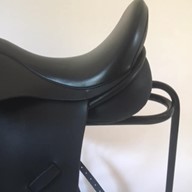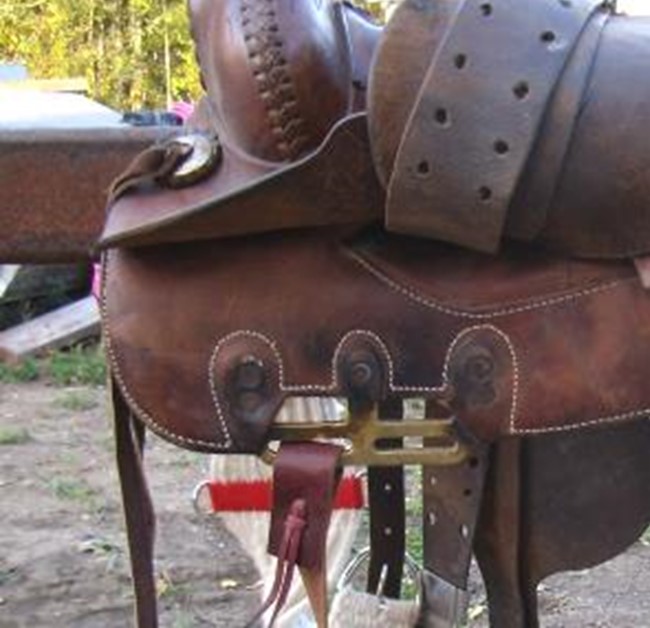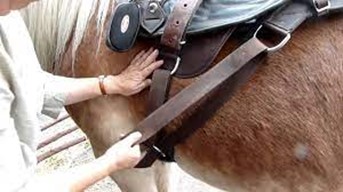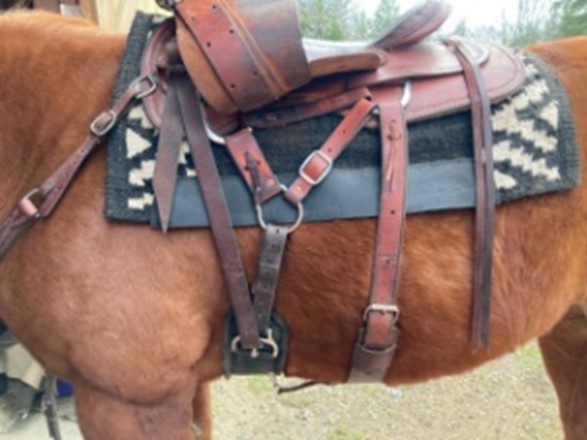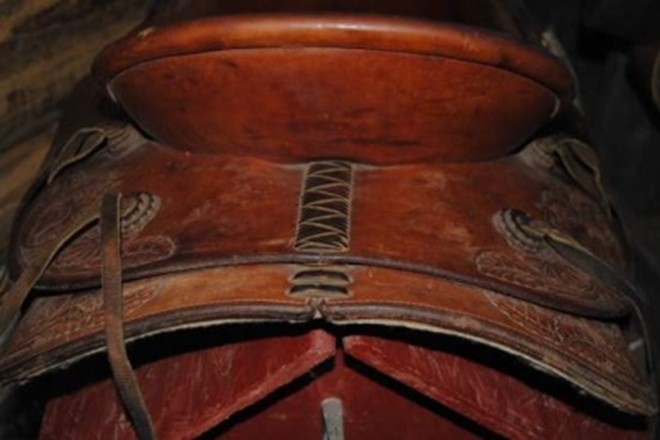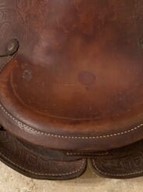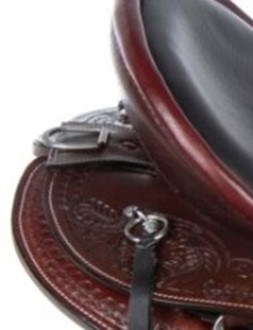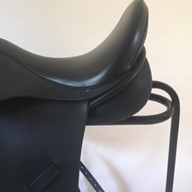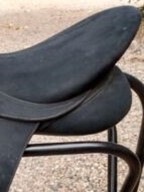Caroline North gave us an excellent explanation on the different dimensions and ways that our saddles need to fit. And then showed us on one of the horses. She is available as a saddle fitter, if you want to consult with her.
Dimension 1- Angle of the Tree needs to match the angle of their withers and back. Something to keep in mind with western saddles especially- If your tree is extra wide, it’s going to be flat along their back and not sit correctly in the back half of the saddle
Dimension 2- Width. The width is measured between the angle of the bars at the front of the saddle. But the width from front to back of the saddle matters. Arabians also need width in the back half of the saddle. If it’s not wide enough, their muscles atrophy, causing pain and behavior problems. Look at the distance between the panels (english) or tree frame (western) . Do they give the horse’s spine enough room to move?
Dimension 3– Rigging- how the saddle is held onto the horse’s back. English saddles- point billets (at the front) can block the shoulder’s movement, especially in short coupled horses. Using the rear billet can help hold the rear of the saddle down, or use the next hole up on the rear billet. Try the different billets to see what combination gives the best result. Western Saddles – Try using the different rings (if the saddle has both) or try a saddle with “y-rigging”, it can give more balance to holding the saddle on. Using a rear billet strap will help keep the back of the saddle from popping up.
Multiple Ring Options:
Dimension 4 – Length of Tree
PLEASE DON’T LET THE SADDLE INTERFERE WITH HIP BONES OR CROUP MUSCLES!!!
Western saddles- “tunnel back skirting” has no lacing holding the two skirt pieces together, and provides more freedom for them. Especially on short backed horses, lacing makes a lump underneath and can ride on/rub their spine= pain, behavior probs, not using their body correctly.
English/Dressage saddles – Do the panels and flocking stick out behind the cantle? Or is there a straight line coming down the back of the saddle? Short backed (“short coupled”) horses need the straight one. The longer panels are likely to run into the loin muscles and cause pain and problems. Now in the following photos, you could make the argument that there’s a pretty straight line down in both. But you can see how one’s panels are longer than the other
Dimension 5- Rock- the shape of the saddle panels/tree from front to back. As you can imagine, can cause discomfort for the horse and an unbalanced seat and poor ride for you.
Dimension 6- Shape for the rider. The balance and fit need to be good for us, too. The saddle needs to put us on our seat bones in the middle of the seat. If we are tipped forward or back, we will crush the horse’s back muscles, as well as cause problems and fatigue for ourselves by fighting to stay in balance.
Dimension 7- Stirrup position. Where the stirrups hang in comparison to our rear ends. This stirrup angle is critical to helping us and the horse be comfortable. On some english saddles, the stirrup bar is adjustable. There are some western saddles that you can adjust the stirrup fenders/leathers, too.
Other Saddle Options:
- Reactor Panels are adjustable and help keep the rider off of the horse’s back, so they don’t interfere with each other. Flex Trees- flex quite a bit, but don’t necessarily fit everyone, or all horses
- Hoop trees- same applies. They move with the horse, but don’t fit every horse
- Treeless saddle- they have a great fit. *Invest in a high quality pad!
*Especially with dressage saddles- pay attention to the tree points (how far they come down along the front of the saddle). If they are too long for the horse, they can interfere with shoulder movement.
*Storage – Best practices: Store inside when possible, or manage humidity in the tack room to save yourself work. The humidity in our climate can expand and contract the leather and materials, causing subtle warping over time and mold. Of course cleaning and conditioning as needed. Put saddles on dry saddle pads so the bars of the racks don’t dent the panels
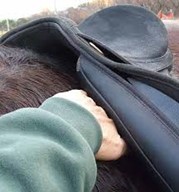
*For proper fit of any saddle, you should be able to put your fingers between the front points of the saddle and behind their shoulder without extra airspace or getting pinched Also check the middle and back of the saddle between the panels/tree and their skin. Are there air gaps? Is there extra pressure? Also check with someone in the seat.
*Sweaty or dry spots aren’t necessarily a quality gauge of saddle fit, as they don’t necessarily sweat evenly during work. If there is a dry circle at the withers/shoulder- indicates pressure points/bridging of the saddle. If you see that dry spot at the rear of the saddle near the loin- indicates the channel of the saddle is too narrow for them. Be aware of your saddle pad. How is the spine sewn? If it is narrow, it could be rubbing your horse. If it is wide, it can distribute pressure better across the horse’s spine.

